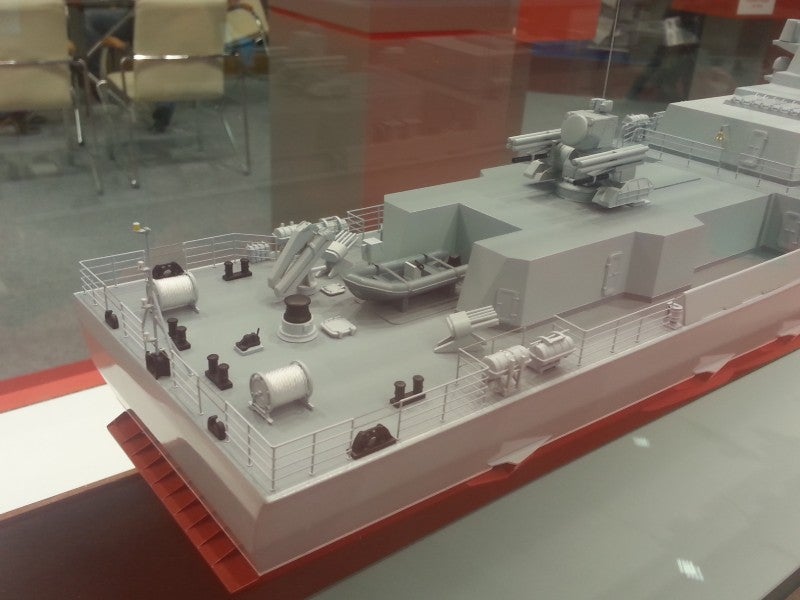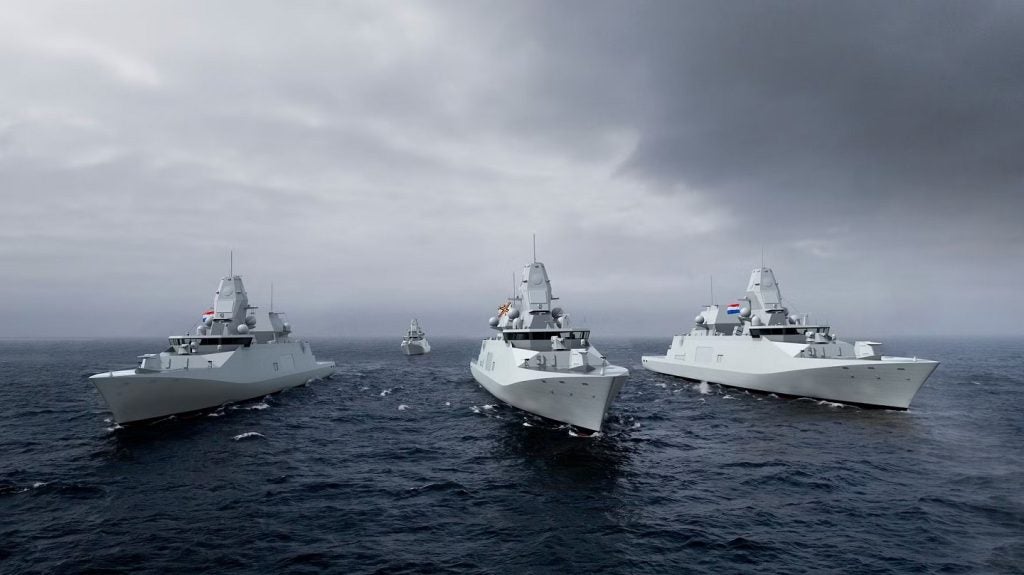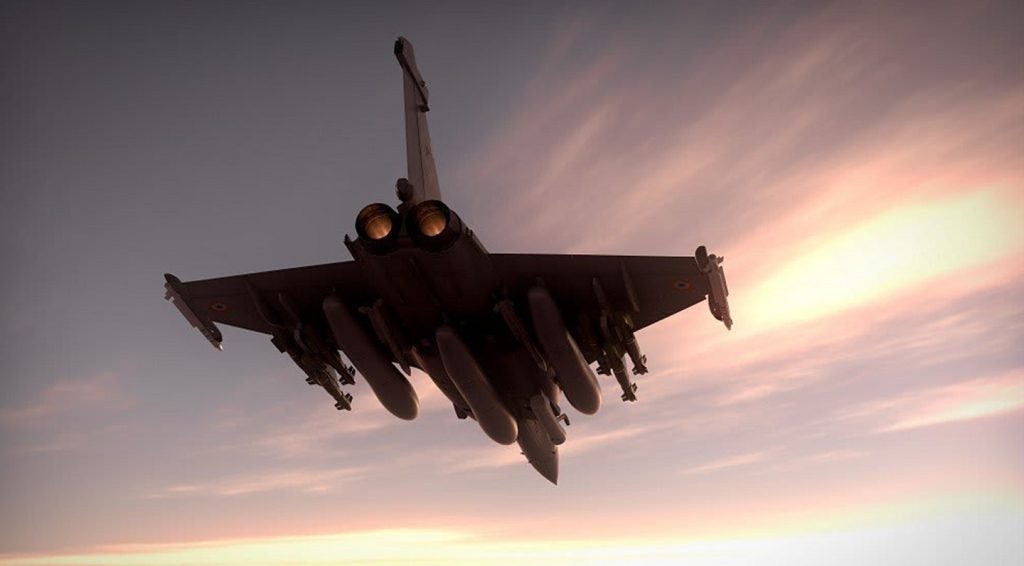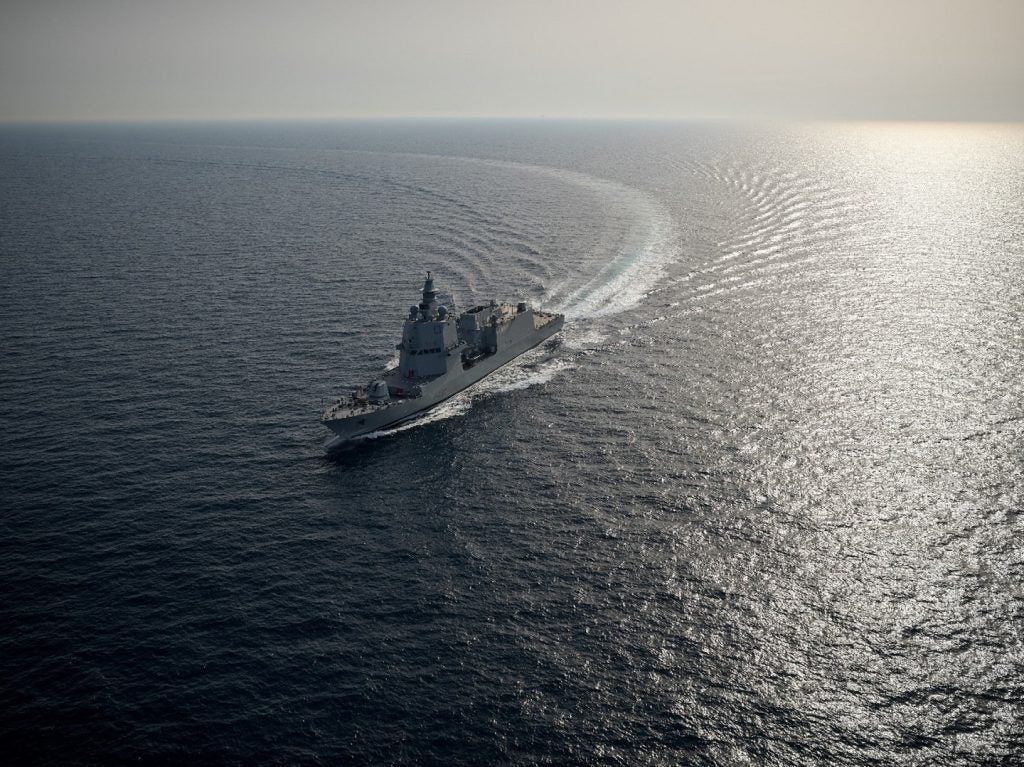
Naval air defence systems protect ships from missiles fired by enemy aircraft and surface craft. The latest generation of naval air defence systems are fully integrated with a ship’s electronic warfare defence system and some have autonomous targeting and firing capabilities.
What are the top naval air defence systems and with which navies are operating them?
Rosoboronexport’s Pantsir-ME

The Russian-developed Pantsir-M (exported under the designation Pantsir-ME) epitomises an autonomous naval air defence system.
With its large thorax-like body complete with two six-barrelled GSh-6-23 autocannons for arms, and eight missile launchers on its shoulders that are capable of firing Hermes-K and 57E6 missiles, the Pantsir looks like a comprehensive defensive weapon system. Its suite of phased array radars, electro-optical and infrared targeting and identification system allow the Pantsir to intercept sea-skimming missiles that can avoid traditional radar systems.
Pantsir-ME’s ability to fire at a rate of 10,000 rounds per minute from its autocannons, and up to a distance of 20km, makes it effective against enemy surface craft and aircraft. It also has a reaction speed of three to five seconds.
How well do you really know your competitors?
Access the most comprehensive Company Profiles on the market, powered by GlobalData. Save hours of research. Gain competitive edge.

Thank you!
Your download email will arrive shortly
Not ready to buy yet? Download a free sample
We are confident about the unique quality of our Company Profiles. However, we want you to make the most beneficial decision for your business, so we offer a free sample that you can download by submitting the below form
By GlobalDataRosoboronexport recently showcased the latest generation Pantsir-ME at the Intenational Defence Exhibition (IDEX) 2019 in Abu Dhabi, UAE.
General Dynamics’ Phalanx

Currently in use with 20 national navies including the US Navy and Royal Navy, the Phalanx Close-in Weapons System (CIWS) developed by General Dynamics is a comprehensive automated defence system that can protect against anti-ship missiles, aircraft, and hard-to-detect high-G and sea-skimming missiles.
Using its M-61A1 Vulcan Gatling gun that can fire at a rate of 4,500 rounds per minute, in tandem with the Ku-band radar and forward-looking infrared radar (FLIR) imaging system, the Phalanx can automatically detect, track, engage and fire on an enemy threat, be it an anti-ship missile (ASM) fired from a surface vessel or high-speed fighter jet.
Phalanx is said to have an average firing range of approximately 3.5km and a muzzle velocity of 1,100m/s.
KBP’s Kashtan

The Russian Navy’s Kortik CIWS (export designation Kashtan) is designed to protect ships against ASMs, anti-radar missiles, aerial threats from aircraft, and can also engage smaller vessels and ground targets.
The upgraded Kashtan-M variant features two 30mm six-barrel GSh-6-30K rapid-fire cannons, which can intercept approaching air targets at distance of up to 10km with missiles, and closer engagement with the gunfire at up to 4km away, according to a Rosobornexport factsheet.
The Kashtan-M’s integrated control system tracks targets and guides missiles through its 9M311-1E missile system, of which it has eight, plus the capacity to hold 24 missiles in total.
It is also equipped with a thermal imaging system for improved operability in adverse weather conditions. The Russian Navy will eventually replace the Kashtan-M with the Pantsir-M.
Thales Nederland’s Goalkeeper

The Goalkeeper CIWS developed by Thales Nederland (formerly Signaal) is an autonomous CIWS with short-range ASM defence capabilities. It is particularly advantageous against highly manoeuvrable missiles, fighter aircraft and fast attack surface vessels.
A key feature of the Goalkeeper is its two radar systems – the I-band search antenna and the I-band and K-band track radar – that work in tandem to prevent an enemy threat from detection to destruction.
Goalkeeper uses a 30mm seven-barrel GAU-8/A Gatling gun with missile-piecing discarding sabot ammunition that is fired at a rate of 4,200 rounds per minute, giving it enough power to destroy missile warheads.
In March last year, the Goalkeeper CIWS officially passed sea acceptance trials with the Royal Netherlands Navy.
Raytheon/Diehl Defence’s RIM-116 RAM

Developed by Raytheon and Germany’s Diehl Defence, the RIM-116 Rolling Airframe Missile (RAM) is an ASM system described by Raytheon as a “supersonic, lightweight, quick-reaction, fire-and-forget weapon”. Fire-and-forget missiles do not require further guidance after launch and can hit targets that are not necessarily in the line of sight of the launcher.
The RIM-116 RAM uses an MK49 guided missile system, which can hold 21 missiles, and an MK44 guided missile round pack. Together, these two components make up the MK 31 guided missile weapon system. It is supported by an M601A1 Gatling gun.
One of the key advantages is its versatility, as it can be integrated to a range of existing ship sensor suites.
It is currently in use on more than 165 ships belonging to 11 countries, on fast attack craft and aircraft carriers alike. The SeaRAM variant combines Raytheon’s RAM guidance technology with the Phalanx CIWS, which replaces the M601A1 Gatling gun in this variant.
MBDA’s Sea Ceptor

The Sea Ceptor is part of MBDA’s common anti-air module missile (CAMM) that includes a land and air variant. The naval version incorporates the latest electronic warfare and weapons system technologies to provide defence against all known air threats.
Sea Ceptor missiles are 3.2m in length and weigh just under 100kg. They provide 360° coverage and can cover a range of more than 25km at speeds of up to Mach 3 (3,704.4km/h).
The UK Ministry of Defence have been developing the Sea Ceptor to work on the Royal Navy’s Type 23 and Type 26 frigates, as the principal air defence capability.
The Sea Ceptor officially entered service with the Royal Navy in May 2018.







